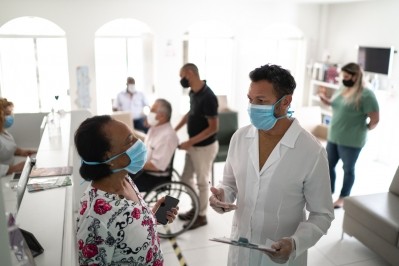Biofourmis reports on the trends and opportunities using digital measures in R&D

A tour of a mock home with all the technology in place was certainly eye-opening, so we were keen to follow up on their latest vision outlined in a full report.
The company says its main aim is to bring the right care to every person, no matter where they are. It uses AI-driven solution collects and analyzes patient data in real-time and identifies shifts that require purposeful and proactive interventions.
Witnessed during the visit and through the mocked-up house, it was clear to see what they offer provides people everywhere with connected access to hospital-level services, virtual provider networks for remote care, in-home services, and life-changing clinical trials from home.
Biofourmis' says its connected platform improves patient outcomes, prevents hospital readmissions, accelerates drug development, and closes critical gaps in care.
Pharmaceutical and life science label claims
The report forecasts that digital endpoints will see broader adoption in supporting pharmaceutical and life science label claims in the years ahead. However, Biofourmis only sees this happening after an industry-wide, pre-competitive collaboration that is aimed at standardization and proactive sharing of data around clinically validated patient-centric outcomes.
This main finding is presented in the report where “Unlocking the Value of Digital Measures in Drug Development,” which delves deep into the trends and opportunities of using digital measures in pharmaceutical R&D.
“We have seen remarkable interest and momentum in recent years toward the incorporation of digital measures and endpoints throughout the drug development lifecycle,” said Biofourmis chief medical officer and co-founder Maulik Majmudar, who is one of the authors of the report.
“The use of digital measures is primarily aimed at accelerating R&D timelines, reducing clinical trial-related costs, and deepening our understanding of disease pathways and outcomes. However, for broad, real-world adoption of digital endpoints, the experts and insiders surveyed revealed that a consolidated approach is essential, encompassing standardized definitions and use of digital health technologies used to capture, share, and analyze these measures.”
Drug development
The report describes the progress of employing digital biomarkers and endpoints in drug development and the challenges of unlocking their true value.
It indicates that pharmaceuticals will benefit from a solid digital measurement strategy and the benefits of using digital measures which have been expressed by digital research and development leaders improving clinical trial efficiency and lower costs shown in the report’s survey results.
Experts also conveyed to the report’s authors, Majmudar and Tessy Huss, director of community strategy for HealthXL, that industry consortia advocating for regulatory clarity and the sharing of validation data will speed up achieving consensus on digital endpoints.
“Numerous experts and senior executives stressed the importance of open-source collaboration on digital endpoint development. This is a challenge considering the fierce scientific and business competition within the industry, along with the financial constraints that researchers face in their study of novel therapies,” Huss said.
A new era of medicine
“Yet by prioritizing collective action and a unified effort toward more clearly defined regulatory approval criteria, these companies can usher in a new era of medicine, in which highly effective therapies arrive sooner and outcomes are evaluated with greater precision and reliability.”
All digital measures or endpoints, experts and insiders said, need to be guided by patient preferences. For instance, the report cites the FDA’s rejection of a proposed digital biomarker for Parkinson’s Disease in 2021, contending that “rigidity or finger tapping” was a measurable biomarker but not “directly meaningful” to patients. Conversely, in 2023, the FDA approved a digital actigraphy device-derived change in moderate-to-vigorous physical activity as a relevant primary endpoint in a phase 3 clinical trial for a drug treating pulmonary hypertension associated with pulmonary fibrosis.
“Progress in building industry consensus and securing regulatory approval around digital biomarkers and endpoints is still in its early stages, but it is progressing rapidly despite the high regulatory burden and rigorous clinical requirements,” said Jaydev Thakkar, COO of Biofourmis.
“Our report, produced in collaboration with HealthXL, summarizes the progress achieved so far and suggests a path forward to help the industry maintain the momentum that is likely to yield greater ROI for pharmaceutical and life sciences companies and improved therapies for patients.”













